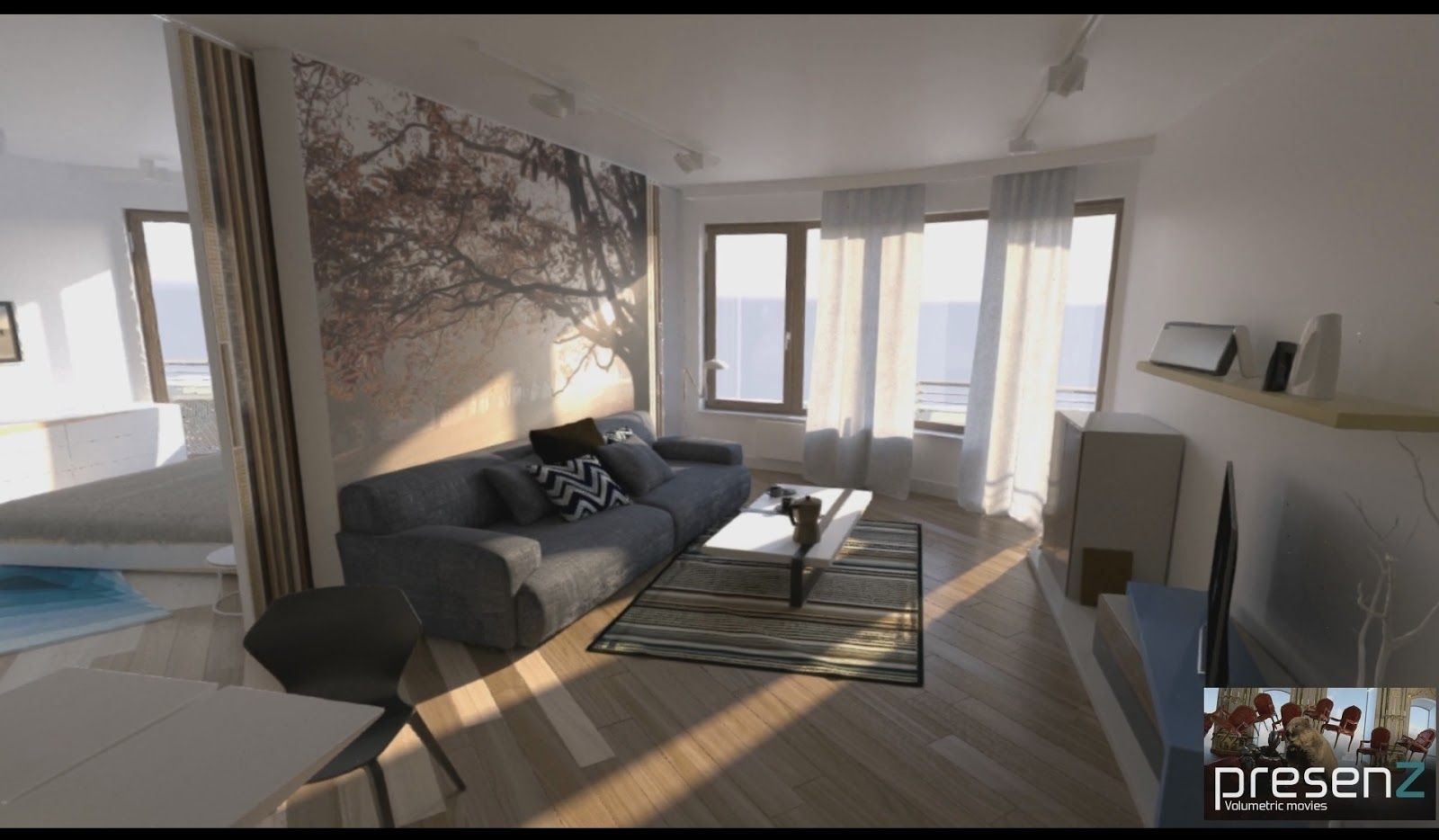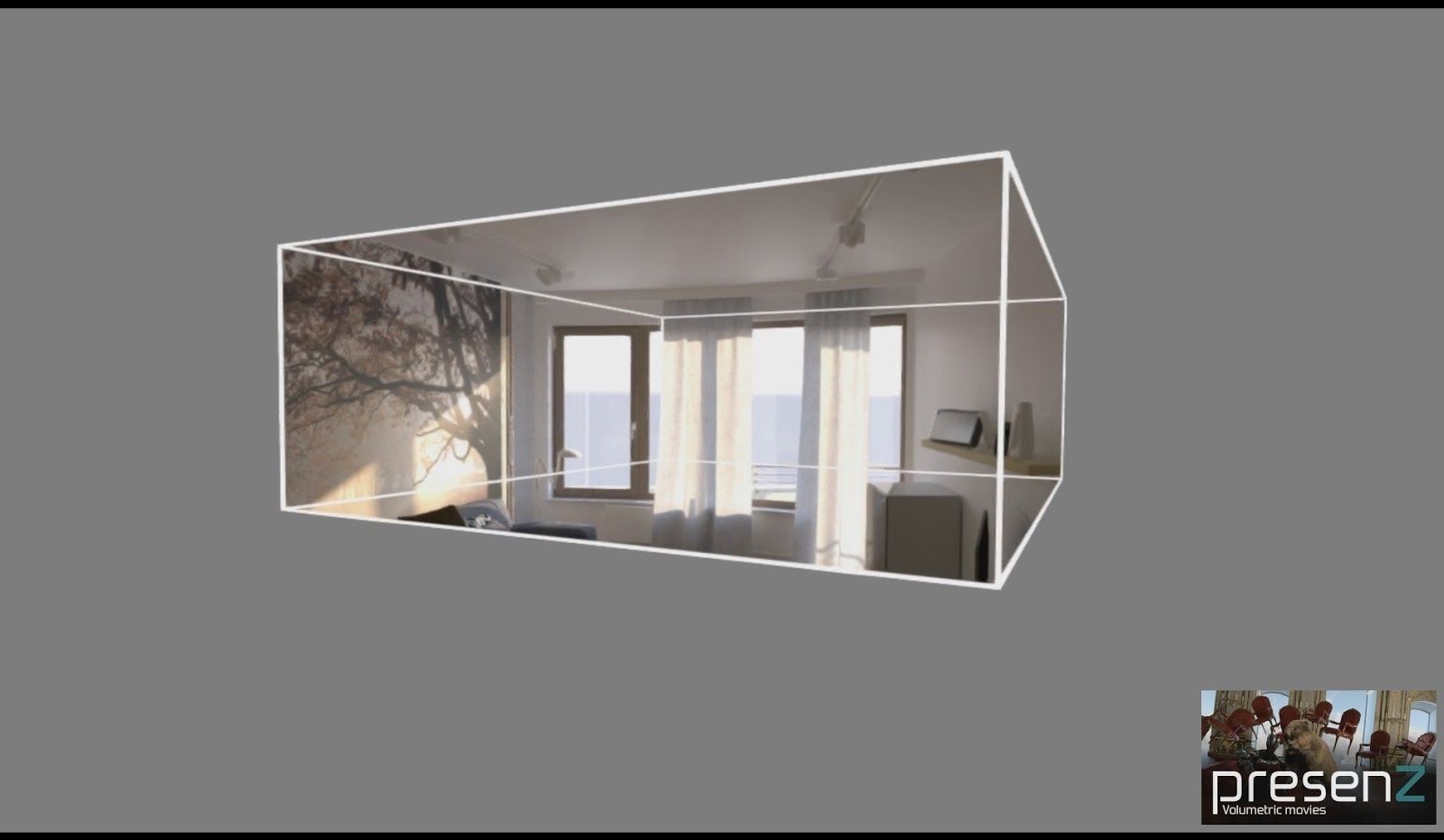1. The zone of view (ZOV)
Understanding the concept of the Zone of View (ZOV) is crucial to working with V-Nova PresenZ. In a standard precomputed rendering, a perspective camera projection is used, which is centered around a point of view (POV), or focal point. However, this type of rendering can cause issues in VR because the user’s perspective is locked to the POV, meaning that they can’t see any objects that are hidden behind what they’re currently viewing. This lack of information is a major cause of cybersickness, discomfort, and poor immersion.
V-Nova PresenZ, on the other hand, renders from a zone of view (ZOV) that gathers all the information that is visible from within the zone. The ZOV is a volume box with a default size of 1 by 1 meter and a height of 0.5 meters. However, this size can be adjusted as explained in the following chapter.
The advantage of using the ZOV is that the user running the PresenZ Viewer can move freely inside the volume and have a proper perspective change on the pre-rendered 3D scene. This means that the user can explore the virtual world from different angles and viewpoints, resulting in a more immersive and engaging VR experience.
In summary, understanding the Zone of View is essential to using V-Nova PresenZ effectively. By rendering from a zone of view instead of a point of view, PresenZ allows for greater immersion and more natural movement within the virtual world, leading to a more satisfying VR experience.

Once the user is inside the ZOV, they have the freedom to look in any direction they choose. This means they can explore the virtual world from different angles and viewpoints.

However, when the user is outside of the ZOV, it appears as if they are looking through a portal to the volumetric scene.
By using the ZOV, V-Nova PresenZ allows for a more flexible and dynamic VR experience that closely mirrors the way we naturally move and explore our physical surroundings. The result is a more realistic and engaging virtual world that can be explored in a way that feels intuitive and natural.